





| Polistes nimpha (Christ, 1791) |






|
|
Scientific name: Polistes nimpha (Christ, 1791) Common name: French name: Order: Hymenoptera Family: Vespidae Wingspan : 14 to 16 mm. Males are slightly smaller than females. Biotope: Geographic area: Europe but missing in the northern regions, North Africa, Asia east to China. Observation period : From spring to autumn. Only mated females hibernate. |
Paper Wasps are characterized by a slender abdomen being very thin on both tips. They have very long legs hanging down behind during flight. Yellow and black markings on the body are bright and their shape may vary. Female Polistes nimpha have yellow cheeks. The clypeus is yellow and crossed by a black stripe. The upper side of the antennae is darkened on all length. The last sternite of the abdomen is black. On the upper side of the head, the distance between the two hind ocelli is slightly larger than the distance from the hind ocelli to the fore ocellus. In spring, after having hibernated, the foundress queen builds a nest made of a single layer of cells. These cells are made up of some kind of thin paper and are never covered with a cap. The nest is usually hooked to a plant, a stone or a wall and located close to the ground in a dry and sunny place. Males appear in autumn and die before winter after mating with future queens. Adults feed on sugar and nectar. They catch flies and caterpillars to feed the larvae. The other Paper Wasps showing yellow cheeks are Polistes dominula and Polistes associus. The upper side of Polistes dominula's antennae is only blackened on the three first articles. The last sternite of the abdomen is yellow. Telling Polistes associus apart is a more difficult task. Its ocelli form an equilateral triangle and the last sternite is black and marked with an apical reddish mark extending on the lateral sides. Polistes bischoffi, whose antennae also show a dark upper side, has black cheeks. |
| [To know more about the Polistes nimpha] [Next picture] [Top] |
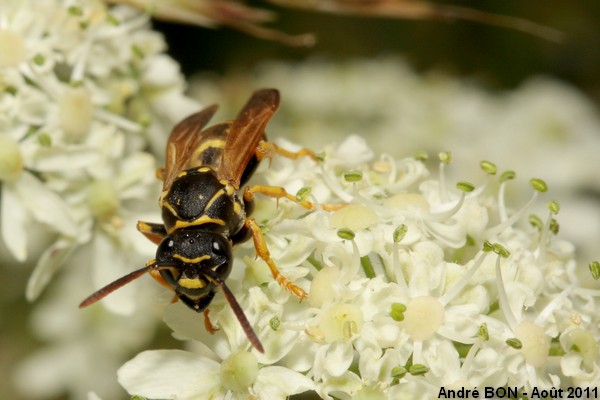
|
The cheeks are not perfectly visible but it seems to me that I can see some yellow colour. This permit to discard the species with black cheeks like Polistes bischoffi. The upper size of the antennae being darkened on all length and the yellow clypeus crossed by a black stripe indicate the Polistes nimpha or Polistes associus species. Having no view of the last sternite (now that I know how it is important I will pay attention) I have tried to evaluate the relative location of the ocelli but it's not easy. So we will stay at Polistes sp as we cannot decide between Polistes nimpha and Polistes associus. |
| [To know more about the Polistes nimpha] [Next picture] [Previous picture] [Top] |
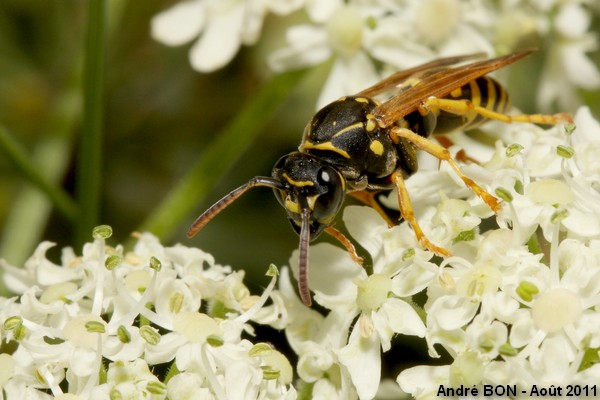
|
This view of the same specimen is still not enough to see the last sternite. |
| [To know more about the Polistes nimpha] [Next picture] [Previous picture] [Top] |
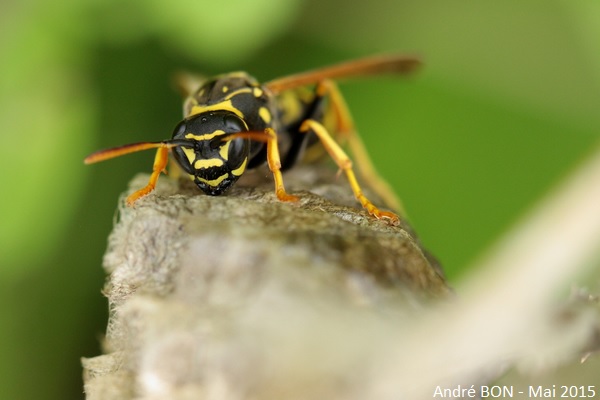
|
Good resolutions for future observations are quickly forgotten. There is still no view of the last sternite nor any easy way to precisely measure the distance between ocelli. |
| [To know more about the Polistes nimpha] [Next picture] [Previous picture] [Top] |
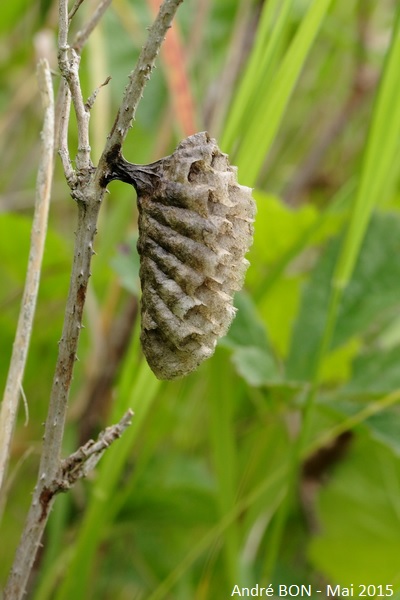
|
Here is the nest on which the above wasp was landed. |
| [To know more about the Polistes nimpha] [Next picture] [Previous picture] [Top] |
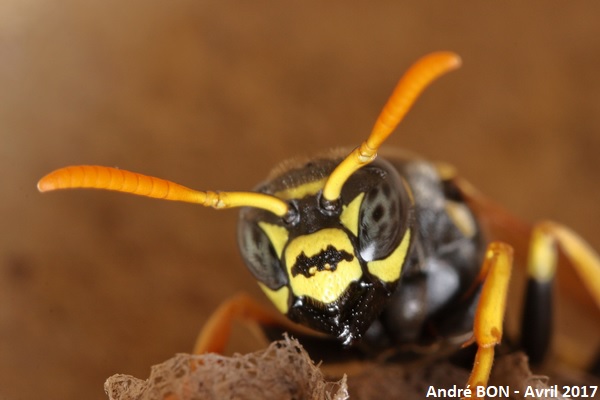
|
It is not with this close-up front view that I will be able to observe all the criteria used by the identification keys! The cheeks are yellow, the clypeus is barred with black, the upper side of the antennae do not seem darkened for a very long length... |
| [To know more about the Polistes nimpha] [Previous picture] [Top] |
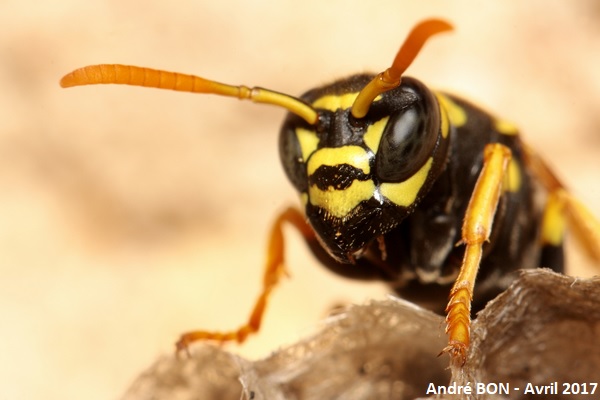
|
Another close-up front view. |